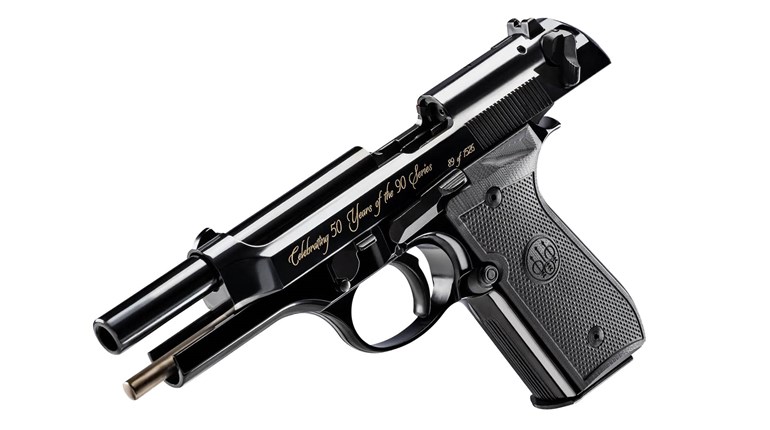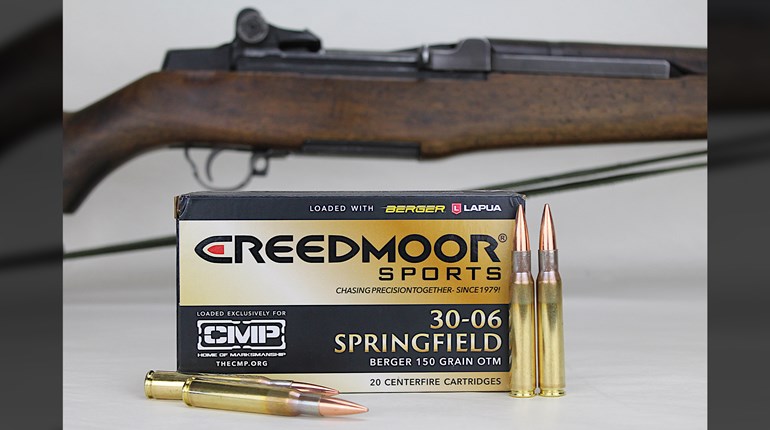
The politics of guns and hunting obscures many deeper truth about America, such as a longstanding connection between private American arms makers and freedom that has greatly benefited our armed forces.
Simply put, progress in U.S. firearms development has always been a mix of military and civilian market demands. While military requirements often provide a springboard for inventiveness, military establishments have long relied on and benefitted from innovations that come from the American civilian market.
Greg Stube, a former Special Forces sergeant and the author of Conquer Anything—A Green Beret’s Guide to Building Your A-Team, shed light on this by saying, “A lot of training time in the Special Forces is used to teach those who don’t have gun experience, especially with the AR-15 platform. To put it plainly: The Special Forces are in the business of creating country boys. When I trained men to be Green Berets I rarely had to spend time training hunters to shoot or move in the field. Whereas I had to spend a lot of time on people who didn’t develop those skills as American hunters and gun enthusiasts. It’s hard to overemphasize how important this real connection is to our freedom. I saw again and again in training and on the battlefield that soldiers who grew up hunting and shooting recreationally are better soldiers.”
To expose this overlooked link, here is a 10-gun salute to the greatest tools of freedom.
- American Long Rifle
School kids learn that on the night of April 18, 1775 hundreds of British troops marched from Boston to nearby towns. And they learn that Paul Revere and others sounded the alarm and that Colonial militiamen mobilized to confront the Redcoat column. They are even taught that an initial confrontation on the Lexington town green started the fight that led to a British retreat from a large force of Americans at Concord. However, one small but important fact few learn is that some of the colonists actually had more advanced arms than the British troops. Some had American Long Rifles.
The British had Brown Bess’s—smoothbore muskets. The American’s who had rifles could hit a man-sized target at 200 and perhaps 300 yards, whereas the Brown Bess was only accurate to maybe 75 yards. And those New Englanders were hunters, so they’d learned to be marksman. They used these skills and their rifle’s technology by laying behind rocks and trees and shooting the Red Coats dead long before the British got close enough to use their smoothbore muskets.
The British preferred the smoothbore Brown Bess because it lobbed a big bullet and because it is faster to load than a muzzleloader with a long rifled barrel—you have to twist a bullet down a rifled barrel and that takes time. Redcoats were geared for close-quarter engagements between masses of troops. But the Americans at Concord didn’t fight that way. They impolitely used their rifles to fire before the Redcoats could get close enough to take advantage of the firepower from their less-accurate muskets.
There were other downsides to American Long Rifles. They were comparably expensive to make and their production rate was slow, as small arms makers produced them one at a time. So though General George Washington made significant use of snipers, most American revolutionaries were later armed with smoothbore muskets—many of them made in France.
Nevertheless, small, private rifle makers in the colonies made it possible for the war to begin on good footing for the colonists.
- Colt Walker
In 1836 Samuel Colt perfected and patented a revolving handgun by bringing together features from previous guns and fashioning them into a mechanically reliable revolver. Colt even thought of developing an assembly line to manufacture his product. School textbooks often call Henry Ford’s use of an assembly line nearly a century later (in the late 1920s) a major innovation, as Ford used an assembly line to make the Ford Model T. But a gun maker a century before had this idea. Colt wrote in a letter in 1836 that the “first workman would receive two or three of the most important parts and would affix these and pass them on to the next who add a part and pass the growing article on to another who would do the same, and so on until the complete arm is put together.”
The U.S. gave Colt a patent for a “revolving gun” on February 25, 1836. These early revolvers were discovered by Texas Rangers who used them to defeat Comanches. In previous fights frontiersmen had to get off their horse to fire one shot at a Comanche with a flintlock rifle, a tribe renowned for swiftly shooting arrows from horseback. Even if the frontiersman killed one Comanche, he’d be killed by others before he could load powder and ball down his muzzleloader, prime the firearm, cock it, aim, and fire. When armed with a Colt revolver, however, a Ranger could fight from horseback and fire multiple shots. This changed the frontier.
- Spencer Repeating Rifle
The Spencer repeating rifle was a lever-action, seven-shot rifle fed with cartridges from a tube magazine in the rifle’s buttstock. It was designed by Christopher Spencer in 1860. The Spencer was adopted by the Union Army and was used by cavalry during the American Civil War. It was popular, but it wasn’t manufactured at a rate that could replace the then standard-issue muzzleloaders.
The Spencer carbine was a shorter and lighter version first produced in 1863. In 1864, during the American Civil War, General Ulysses S. Grant supplied General Phil Sheridan with 10,000 mounted men equipped with Spencer seven-shot carbines, a prototype of this rifle had been personally approved by President Abraham Lincoln. These rifles, which the Southern Confederacy didn’t have the manufacturing capability to match, are part of what gave the Union its victory.
- Sharps Rifle
Christian Sharps developed rifles known for their accuracy. Before forming the Sharps Rifle Manufacturing Company in Hartford, Conn., in 1851, Sharps worked at John Hall's Rifle Works in Harpers Ferry, Va., and then with the firm A.S. Nippes in Pennsylvania. While working in Hartford, Sharps’ “Model 1853 Carbines were nicknamed ‘Beecher's Bibles,’” says the National Firearms Museum, “after noted New York clergyman and abolitionist Henry Ward Beecher. Approximately 900 of these arms were shipped in heavy crates marked BIBLES for use by anti-slavery ‘Free Soil’ settlers who were fighting against pro-slavery forces in ‘Bleeding Kansas’ during the 1850s. One of the most famous Free Soilers was John Brown, who later used 300 Model 1853 Carbines in his ill-fated attempt to capture the U.S. Armory at Harpers Ferry, Virginia in 1859.”
- Model 1911 Pistol
The Model 1911 pistol was the result of a search for a suitable self-loading pistol that would replace the variety of revolvers then in service. Designed by John Browning (1855-1926), the need for the a new and more powerful semiautomatic pistol became clear to the U.S. military in when American units fought Moro guerrillas during the Philippine-American War (1899-1902). The U.S. forces were using the then-standard Colt Model 1892 revolver chambered in .38 Long Colt. The Moros frequently used drugs to numb themselves to pain and the .38 Long Colt cartridge didn’t have enough knockdown power to stop them. Also, the revolver was slower to reload then new semiautomatic pistols.
In 1906 this search for a better handgun led to military test trials. Field tests from 1907 to 1911 were held and the Colt Model 1911 won easily and was adopted by the U.S. Army on March 29, 1911, thus gaining its designation, Model 1911. It was adopted by the U.S. Navy and Marine Corps in 1913.
Originally manufactured only by Colt, demand for the Model 1911 in World War I became so great the Model 1911 was also manufactured in the government-owned Springfield Armory, making it yet another civilian invention that was picked up and manufactured by contract by the U.S. government.
The Model 1911 pistol was subsequently widely copied. It quickly became popular with civilian shooters in competitive events. Soon full-sized and compact variants were made available for civilians as carry guns.
- Springfield Model 1903 Rifle
The Model 1903 Springfield, formally known as the “United States Rifle, Caliber .30-06, Model 1903,” was officially adopted as a U.S. service rifle on June 19, 1903. It saw service in World War I and was officially replaced as the standard infantry rifle by the faster-firing semiautomatic M1 Garand starting in 1936. However, the M1903 Springfield remained in service as a standard issue infantry rifle during World War II, as the U.S. entered the war without sufficient M1 rifles.
The Model 1903 introduced a lot of Americans to bolt-action rifles. Bolt-actions rifles can accurately fire repeated rounds of large-caliber ammunition. Over one million U.S. Model 1903 bolt-action rifles were manufactured before production was discontinued in 1941. Many soldiers came home from World War I and wanted bolt-action rifles for hunting and sporting purposes.
- M1 Garand Rifle
The “U.S. Rifle, Caliber .30, M1” was adopted in 1936 by U.S. Armed Forces as a standard-issue service rifle. During the interwar years, John Garand, a Canadian-born design engineer and Springfield Armory employee, worked on a design for a new gas-operated semiautomatic rifle chambered for the standard .30-06 military round that would be the M1. Over three and one-half million M1s were produced at the Springfield Armory. An additional, half million were manufactured by Winchester Repeating Arms Co. General George S. Patton called this rifle “the greatest battle implement ever devised.” It gave American troops a significant edge over soldiers who were still equipped with bolt-action rifles.
- AR-15 Rifle
The AR-15, and its offspring the M16, got their start in an American aeronautics company. In 1955 ArmaLite Corporation, then a subsidiary of Fairchild Engine and Aircraft Corporation, submitted a gun design to the U.S. Army. It was the AR-10, a carbine devised by Eugene Stoner, a former U.S. Marine who had served in Aviation Ordnance during WWII, but based on George Sullivan’s concepts. Sullivan was an engineer who saw an opportunity to use new manufacturing methods and materials to create new gun designs. The AR-10 was made with anodized aluminum, a plastic butt stock, and other materials.
The Army was then searching for a new service rifle. The AR-10 looked cosmetically like what would later be the AR-15 and then the M16, but the AR-10 used the larger 7.62 mm chambering. The chambering wasn’t novel, but the AR-10 was a modern rifle, a new rifle for an age with molded plastic cups, dashboards, and toothbrushes. It was a modular-looking rifle with a carry handle on top that utilized space-age materials. The AR-10 might have looked awkward at first, but it lightly fit into a person’s shoulder and pointed well. It also weighed 7.25 pound without a magazine—about two pounders lighter than the M14 it was competing with.
The Army, however, was skeptical. Time magazine profiled the AR-10 and called it a new “aluminum rifle” produced “at no cost to the taxpayer” and said the rifle “gave promise of being superior.” At the time the Springfield Armory was still making guns for the U.S. military, as it had since George Washington founded it. Sure, civilian gun designers had always collaborated with the Armory and often pushed new designs into the hands of soldiers and citizens alike, but if this rifle was accepted it could mean the end to the Armory, as the Armory was counting on making the M14 and didn’t have the know-how to make plastic stocks and rifles with anodized aluminum parts. Some of the U.S. Army’s leadership were also reportedly turned off by AmraLite’s media blitz.
The AR-10 didn’t win a military contract but its offspring the AR-15 would. The AR-15 was chambered in the lighter 5.56 mm (or .223 Remington). However, before the military bet on the new AR-15, ArmaLite’s parent company hit hard times financially and decided to unload ArmaLite. In January of 1959 the AR-15’s design and manufacturing rights were sold to Colt for the rock-bottom price of $75,000 and a 4.5 percent royalty on future sales.
Colt’s experienced firearms engineers went to work and quickly tweaked the AR-15’s design—the biggest change they made was relocating its charging handle from under the carrying handle to the rear of the receiver. Colt then started a public-relations campaign that knocked the M14 for being too old school as they talked-up the benefits of the lighter AR-15. The original AR-15 weighed less than 6 pounds without a magazine, whereas the M14 weighed on average 9.2 pounds when empty. The AR-15 finally had its day. In 1963 a full-auto version made for the U.S. military was dubbed the “M16.” That same year Colt began selling semiautomatic AR-15s to U.S. consumers.
- Beretta M9 Pistol
The semiautomatic M9 pistol was part of a limited group tested in the U.S. military’s XM9 trials to determine a successor to the Model 1911 pistol. Beretta’s M9 (essentially a military specification Beretta 92FS) won the trial and became the new U.S. service pistol.
Beretta began making guns in northern Italy just a few years after Leonardo DaVinci died. Beretta’s pistols would influence the next generation of gun designs. Mel Gibson, for example, carried a Beretta 92 in the 1987 action film “Lethal Weapon” and was cast as the younger, hipper cop beside the older, and revolver carrying, Danny Glover.
- M4 Carbine
The M4 carbine is the progeny of the M16 rifle, which was born from the AR-15. The M4 is a shorter and lighter variant of the M16A2 assault rifle. It is a gas-operated, magazine-fed, selective fire rifle. Like the rest of the M16 family, it fires the .223 caliber, or 5.56 mm NATO round.
U.S. Armed Forces carry versions of this carbine. The M4 has selective fire options including semiautomatic and three-round burst (like the M16A2 and M16A4), while the M4A1 has the capability to fire fully automatic instead of three-round burst (like the M16A1 and M16A3). They are also capable of mounting the M203 grenade launcher.
The M4A1 carbine is a fully automatic variant of the basic M4 carbine. The M4A1 is used by almost all U.S special-operation units. The U.S. Army lists its maximum effective range at about 500 to 600 meters.


































